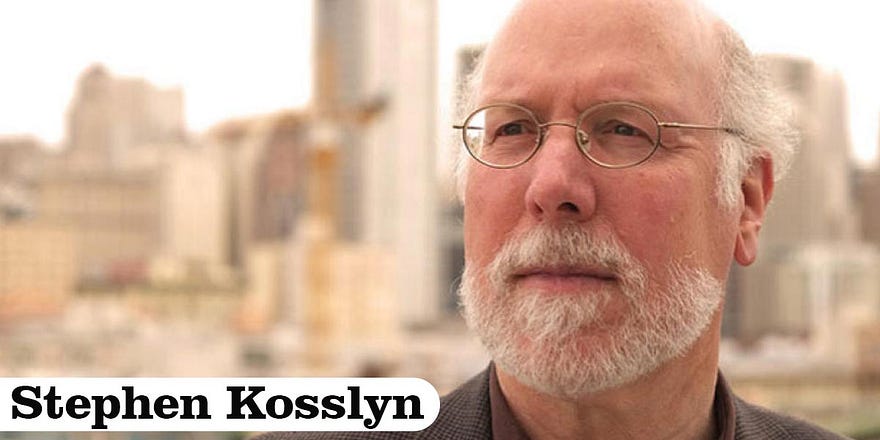There’s a YouTube video called ‘Water Isn’t Wet’ in which the presenter discusses various definitions of water which have it that “water isn’t wet”. Then, at the end of the video, he solemnly says that “the science” is where the true answer can be found. Yet, arguably, the chemist who gives the true answer simply tells us what must chemically underpin the H₂O molecules in order for them to bring about human/animal experiences of wetness.

[Note: The quoted scientific descriptions of water and its properties in the following are taken from Quora. They were chosen primarily because of their colloquial simplicity. That may mean that they’re not entirely accurate. However, that doesn’t really matter because even a perfectly accurate (technical) account of water and its properties wouldn’t change — or impact upon — any of the arguments in the following essay.]
Introduction: Water Isn’t Wet!
There’s a YouTube video called ‘Water Isn’t Wet’ in which the presenter discusses various definitions of — and positions on — water. They all have it that “water isn’t wet”. Relevantly, none of these definitions (or descriptions) are the same as the ones which will be advanced in this essay.
For example, one argument is that water isn’t wet because “only something that can also be dry, can be wet” (i.e., wetness is a “temporary state of being”). The video also cites various dictionary definitions which support the argument that water itself can’t be wet.
Then, at the end, the presenter solemnly says that “the science” is where the true answer can be found.
Indeed, all the definitions and arguments the presenter tackled were basically deemed — by him — to be a waste of time. He states that “none of this is getting us anywhere”. And that’s because it was all simply “arguing semantics”.
Thus, the Science must have the last word on this issue.
The video then cuts to the Scientist giving that last word on water and wetness.
Professor of Chemistry Richard J. Saykally offers the viewers a highly-technical account of water which includes references to “strong tetrahedron hydrogen bonding”, the “interaction of dipoles” and “quantum theory”.
Yet never once does he mention the word “wet” or “wetness”.
Neither the Scientist nor the presenter of this video see the problem here.
If only in my own argument, all Richard Saykally is doing is describing what is chemically required to bring about experiences of wetness. Alternatively, the Scientist is simply telling us what chemically underpins such experiences. In other words, a purely chemical account of H₂O molecules needn’t include the additional non-scientific concepts of [wetness] or [wet].
Another way to put all this is to state that wetness can’t literally be identical to even a complete chemical description of H₂O molecules (or a complete description of the relevant aspects of H₂O molecules) because then we’d have this simple identity:
wetness = H₂O molecules
Yet that can’t be right. After all, isn’t this the true identity? -
water = H₂O
So wetness (or something’s being wet) could never simply be a matter of a complete description of H₂O molecules (or a complete description of the relevant aspects of H₂O molecules). And that’s precisely because there could never be a literal identity between wetness and such a complete description.
All that will hopefully be shown in the following.
In any case, the presenter of that video discusses various dictionary definitions of “wetness” (or “wet”), some of which imply (though don’t state) that water isn’t itself wet. And other definitions (plainly) contradict each other.
All this annoys the presenter. And he may — at least partly — have a point. Indeed, he even raises the issue of stipulation (if without actually using that word).
Semantic and Conceptual Stipulation
When it comes to water’s properties of wetness and transparency, the problem of conceptual and semantic stipulation (see here) is encountered.
For example, one can argue that wetness is due to what happens when parts of the human body come into contact with water and what that impact has on human sensory systems and the human mind.
Alternatively, one can define and describe wetness entirely in terms of the structure and composition of H₂O molecules . Thus, one needn’t mention human beings or their sensory systems at all.
So is water’s wetness actually dependent on human sensory systems and human minds? Indeed, is this also true of water’s transparency?
After all, water is transparent to visual systems. (It is transparent to human beings and some other animals.) Thus, if there were non-sensory beings which also had brains and intelligence, then would they class water as “transparent”?
In purely chemical accounts, perhaps what’s really being described are the chemical underpinnings of (or what is required for) transparency and wetness. However, can transparency and wetness themselves be so described without bringing on board things which are external to H₂O molecules and their chemical nature?
That said, even various chemical accounts of H₂O molecules still mention what our eyes see or what we feel (or experience).
To take quick example, on one account it’s said that because human eyes can only see the visible light portion of the entire electromagnetic spectrum, then we can’t see any colour in water. However, the excited electrons in H₂O’s atoms do emit radiation in the ultraviolet region of the electromagnetic spectrum.
Thus, to human beings, water is transparent.
Interestingly, some readers might have already noted that this broad discussion is very similar to the ones which undergraduate philosophy students encounter when discussing sound and colour. For example:
(1) Does a felled tree make a sound when no one is around to listen to it?
(2) Is a rose actually red (or any other colour) when no one is looking at it?
Perhaps, then, these matters are at least partly stipulational in nature.
Thus, the Australian philosopher David Chalmers is helpful here.
David Chalmers on Stipulation
David Chalmers stresses the importance of what he calls “stipulation”.
His basic point is that if we stipulate what we mean by a particular word (or concept), then the answers to any questions (as well as answers) we have about the facts, data, etc. regarding that word and its referent, must — at least partly — follow from such stipulations.
Of course, some readers may be shocked by the idea that acts of stipulation are important — or even decisive — when it comes to what we take to be matters of fact.
Yet it’s not that simple.
It can be agreed that there is a problem with overstressing the importance of stipulation. (There may even be a problem with simply emphasising stipulation.) Chalmers himself sums up this problem with a joke. He wrote:
“One might as well define ‘world peace’ as ‘a ham sandwich.’ Achieving world peace becomes much easier, but it is a hollow achievement.”
Clearly, even someone who argues that stipulation is important won’t also accept that we can define the words “world peace” as “a ham sandwich”. In turn, some philosophers and laypersons will feel just as strongly about claiming that, for example, “a computer virus is alive” (see here) or that “bacteria learn” (see here).
More relevantly, some readers may also argue that water is both wet and transparent regardless of human sensory receptors and human minds.
So perhaps Chalmers’ words can be equally applied to water’s properties of wetness and transparency.
Technically, then, if x, y and z constitute what it is for something to be wet or transparent (or to be world peace or a ham sandwich), then if something displays (or instantiates) x, y and z, then that something simply is wet or transparent.
That is, of course, a simplified story.
That’s primarily because agreement will also have to be secured on what precisely x, y and z are, and then on whether or not x, y and z are necessary and sufficient for wetness or transparency (or for being world peace or a ham sandwich).
Yet however complicated this story turns out to be, stipulation will still be a part of it.
To repeat. David Chalmers is still keen to stress the importance of stipulation when it comes to such decisions.
[More broadly, Chalmers also believes that much that passes for metaphysics (i.e., in contemporary analytic philosophy) is merely what he and others call “verbal dispute”.]
Reprise: Water isn’t Wet or Transparent!
The following is just a single account of water:
“Water isn’t wet. Wetness is a description of our experience of water; what happens to us when we come into contact with water in such a way that it impinges on our state of being.”
If readers recall the discussion about stipulation, then it can now be argued that this passage isn’t either necessarily false or necessarily true.
Now take this account of water’s wetness:
“There are in water many free charged hydroxyls (-OH-, negatively charged) and hydrogen ions (H+ positively charged). These charged particles retain the ability to attract other charged particles (with the opposite charge) just as magnets do. In this way they stick or cling, involving other neutral H₂O molecules at the same time. If water was made up entirely of neutral particles it would not cling, or wet, because the component elements would ‘prefer’ to stick to each other rather than to make bonds with other substance.”
This passage doesn’t mention either human beings or their sensory systems at all.
Some readers will also be able to detect the silent scare quotes around the single use of the word “wet”. Yet even if this account is entirely correct, one can still ask why the word “wet” is used in the first place for these purely chemical descriptions.
So is it that chemists don’t ordinarily use the words “wet” and “wetness” when analysing the properties of H₂O molecules — even qua water?
Yet, if that’s the case, then in what way are H₂O molecules wet at all?
After all, the description directly above could stand on its own without any mention of something’s being wet or wetness.
Perhaps what is (chemically) described above isn’t wetness at all.
Now here’s another description of water’s wetness:
“The cohesive forces of water (the force holding individual water molecules together) or the intermolecular forces holding the H₂O molecules such as hydrogen bonding and van der Waals are weaker than the adhesive forces (how the surface of the glass attracts water molecules, which makes the water droplet spread out and in turn ‘wet’ the surface).”
Here, again, there’s only a single use of the word “wet”. And this time it is put in scare quotes.
In the introduction it was written that perhaps what’s really being described (i.e., in the purely chemical accounts) are the chemical underpinnings of (or what is required for) transparency and wetness. Thus, it can also be argued that the description of wetness (or what wetness is) directly above is actually an account of what needs to chemically underpin (or bring about) human and animal sensory experiences of wetness and transparency.
However, can transparency and wetness themselves be so described?
Now recall the discussion of conceptual and semantic stipulation.
It can be argued that it is a description of wetness if chemists (such as Professor Richard J. Saykally) — or others! — decide (or stipulate) that it is.
So no one need dispute a perfect chemical account of H₂O and its properties. Instead, this debate is simply about the nature and role of the concepts [wetness] and [transparency].
Let’s go into more detail on water’s transparency, rather than its wetness.
Take this account:
“Electrons in water act in a similar way to visible light so they don’t absorb or reflect most of the light. Instead they allow it to pass through relatively unimpeded, absorbing wavelengths like infrared and reflecting invisible UV.”
This description has it (if when simplified) that the nature of electrons (among other things) and their interactions basically bring about (however those two words are interpreted) transparency.
Now, for variety, in the following we also have an evolutionary- and sensory-based account of water’s transparency:
“Water is transparent because eyes first evolved in water. The range of the EM spectrum we detect corresponds to the spectrum for which water is transparent (absorbs the least). Had we evolved in mercury, we would think mercury is transparent and detect EM waves that pass through mercury.”
Like wetness earlier, it can now be stated that the two descriptions above are about what needs to chemically underpin (or bring about) the sensory experiences of transparency which humans beings and other animals have.
On this picture, then, the purely chemical stories alone aren’t actually descriptions of transparency at all.
However, they are if chemists and the Science decide that they are.
In any case, this story is even more (non-scientifically) complicated than what’s been written so far.
Conclusion
Even if we dispense with the philosophical term emergence, it can still be argued that water’s transparency and wetness aren’t only about H₂O molecules and their nature alone. After all, on one account at least, transparency is — at least partly — determined by how much of the incoming electromagnetic wave is absorbed and re-emitted by the relevant molecules.
Such incoming waves are external to the molecules.
Unless, that is, these seemingly external additions (i.e., external to the H₂O molecules) aren’t actually deemed to be a part of the H₂O story.
More technically, if molecules (or any kind of matter) absorb all the incoming electromagnetic wave, then it will be opaque. However, if the electron orbitals within the atoms — which are themselves within the H₂O molecules — start reemitting the formerly absorbed electromagnetic wave, then that wave can keep (as it were) jumping through the molecules (or through the matter).
Thus, we have water’s transparency.
What’s more, an individual H₂O molecule is neither transparent nor wet. Transparency and wetness occur — and only then, arguably, when in conjunction with brains, sensory receptors, minds, etc. — when we have a large enough collection of H₂O molecules. (Exactly how many H₂O molecules? See ‘the Heap’.) So the properties of wetness and transparency may still not be entirely explained by a chemical description of a single H₂O molecule or even by a small collection of H₂O molecules. That is, transparency and wetness can still be deemed to be over and above the nature of H₂O molecules.
Finally, when the transparency and wetness of water are described in purely chemical terms, then all we are really given is a complete chemical description of H₂O molecules (as well as, perhaps, some non-biological environmental facts). However, do these chemical facts alone really lead to transparency and wetness? If not, then surely we must then move onto sensory receptors, brains, minds and all the other relevant things which are external to H₂O molecules and their interactions.
My flickr account.













